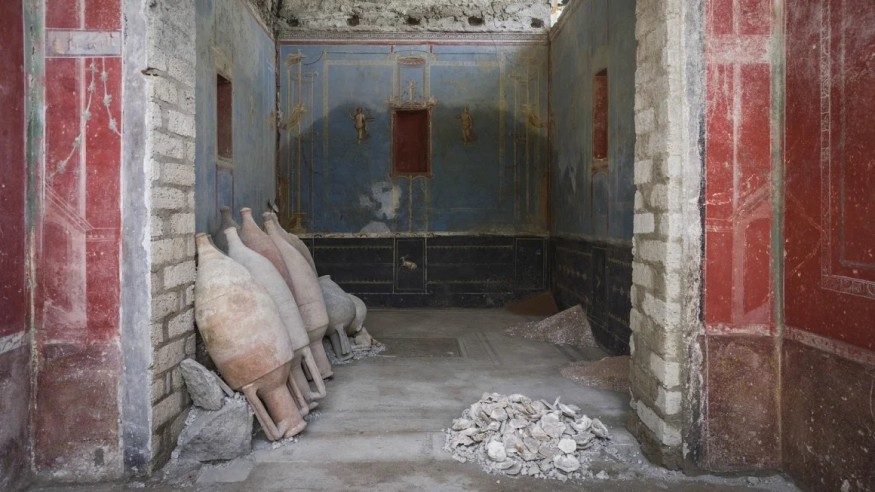Archaeologists Latest Discovery Reveals Rare Blue Shrine in Pompeii

Archaeologists in Pompeii have uncovered a strikingly decorated blue room, believed to be an ancient Roman shrine, or sacrarium, during recent excavations in central Pompeii, Italy. This rare find adds another layer of intrigue to the storied ruins of the ancient city.
A Rare Discovery in Pompeii's Treasures
Italy's Minister of Culture, Gennaro Sangiuliano, who visited the site on Tuesday, highlighted the discovery. Sangiuliano described Pompeii as "a treasure chest that is still partly unexplored." The blue paint found in the room is particularly notable due to its rarity, generally reserved for areas of significant decorative importance, according to the Italian Ministry of Culture.
An in-depth analysis by the culture ministry suggests that the room served as a sacrarium, a space for ritual conditioning and the preservation of sacred objects. The walls of the room are adorned with female figures representing the four seasons and allegories of agriculture and shepherding, furnishing a glimpse into the religious and cultural practices of ancient Pompeii.
Ongoing Excavations in Regio IX
The shrine was discovered during excavations in the Regio IX area of central Pompeii, a residential sector presently one of the most active spots for new findings. These excavations are part of a larger design aimed at securing a perimeter between the excavated and non-excavated areas of the archaeological park, which boasts more than 13,000 excavated rooms. The project seeks to enhance the structural integrity of the area, ensuring that the protection of Pompeii's expansive heritage is practical and sustainable.
The sacrarium is just one of several significant discoveries in the area. Archaeologists have also unearthed furnishings from a house, a bronze kit containing two jugs and two lights, building materials used in renovations, and oyster shells reflective of ancient salutary practices. These findings contribute to a richer understanding of daily life in Pompeii before the disastrous eruption of Mount Vesuvius in 79 AD.
Children's Sketches and Insights into Ancient Life
In addition to the shrine, last week's excavations revealed children's sketches depicting violent scenes of gladiators and hunters battling creatures. These drawings, believed to have been made by children aged five to seven, were set up on the walls of a back room in the domestic sector of the archaeological park. The sketches give a poignant memorial that even children in ancient times were exposed to the brutal realities of their society.
The continuous discoveries in Pompeii underscore the city's historical richness and the importance of ongoing archaeological work. Each new finding, from the blue sacrarium to the children's sketches, offers a deeper insight into the lives, beliefs, and practices of Pompeii's ancient inhabitants. As excavations progress, archaeologists and historians remain hopeful that more hidden treasures await discovery, further unraveling the mysteries of this once-thriving Roman city.
From Digital Models to 3D-Printed Homes: Jaspreet Kaur Lall Explains How the Innovation Changes the Construction Industry

Future Belongs to Green Construction: Sampath Kumar Paspunoori Explains One of the Key Trends in the Construction Industry

Kamala Harris' Campaign Ad Uses Iconic Visuals from Carrie Mae Weems to Connect with Voters

Historic Ancient Roman Ruins in Baalbek Remain Strong After Israeli Air Strikes; Locals Seek Cultural Protection

4 Ways to Honor Departed Loved Ones in Your Home Design













